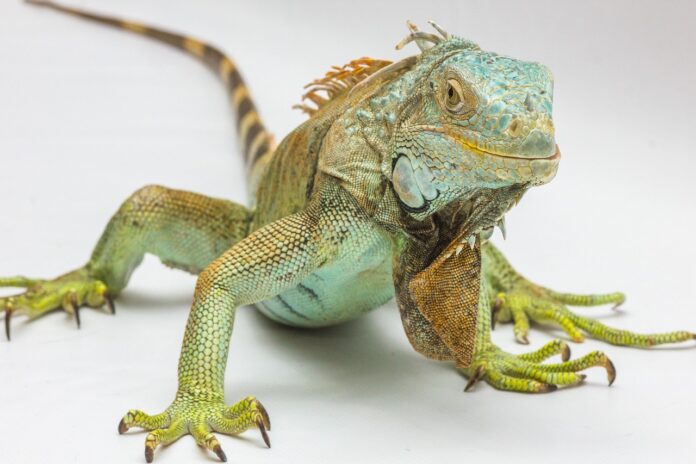In the tropical forests of Central and South America and the Caribbean islands live majestic reptiles—iguanas. These creatures are quite fascinating: at one moment, they seem like lazy sunbathers, and the next, they resemble aggressive predators. However, despite their appearance—with spines on their backs and sharp claws on their feet—iguanas are actually pacifists. Their diet consists mainly of fruits and other plant-based foods.
To protect themselves from natural enemies such as caimans, ferrets, anacondas, and birds, iguanas usually rely on running, hiding, or swimming away. But when necessary, they can put up a fight: they hiss, bite, and whip their thin, whip-like tails. Because of this defensive behavior, even the fiercest jungle predators tend to avoid adult iguanas.
There are 35 different species of these remarkable creatures, each adapted to its specific environment. For example, tree-dwelling species have slightly flattened bodies, making it easier for them to climb branches. Their skin color also changes to help them blend into their surroundings. The most common and largest species are green iguanas.
Interesting Facts:
- Iguanas have been known to science since 1758 when they were first described by Carl Linnaeus in his work Systema Naturae. However, travelers had mentioned these lizards in their journals even earlier.
- These animals are cold-blooded, often basking on rocks to maintain their body temperature. During sudden cold spells, iguanas can enter a state of hibernation—muscle numbness and slowed metabolism—which can lead to them falling from heights and other unfortunate incidents.
- Iguanas have a “third eye”—a special light-sensitive organ that helps them navigate day and night cycles.
- Some species can change their skin color, ranging from green to blue, gray, or even black.
- The ancient Maya considered lizards to be embodiments of deities, and a cult existed in their honor.
- Striped iguanas are a national treasure of Fiji.
- These reptiles can sneeze.
- Marine iguanas can stay underwater for up to 30 minutes and are just as comfortable in the water as fish.
- Female iguanas don’t care for their offspring. They carefully select a spot to lay eggs, and after laying them, they leave the nest forever.
- Iguanas can recognize their relatives. While the mechanism for forming social bonds in iguanas is not well understood, scientists have observed changes in behavior when lizards “interact” with siblings.
- Although these lizards are vegetarians, eating too much cabbage or lettuce can cause digestive issues.
- Recently, iguanas have become popular pets. However, before deciding to keep one, it’s essential to consider that iguanas have long lifespans, with some living up to 30 years.
- Not everyone is as kind to iguanas. They are often hunted for their delicious meat and high-quality skin.
- Tail Defense: Iguanas can detach their tails as a defense mechanism. When threatened, they may sacrifice their tails to escape predators. Over time, the tail regrows, although it is never as long or as strong as the original.
- Incredible Swimmers: Iguanas are excellent swimmers. Green iguanas, in particular, can dive into the water from tree branches and swim long distances, using their powerful tails to navigate.
Iguanas are considered highly intelligent reptiles. One example of their cleverness is seen in the Galápagos iguanas, which primarily feed on cacti. However, none of them will bite into the plant until they’ve carefully removed the spines. They do this by breaking off a piece and rolling it on the ground until the desired result is achieved.
